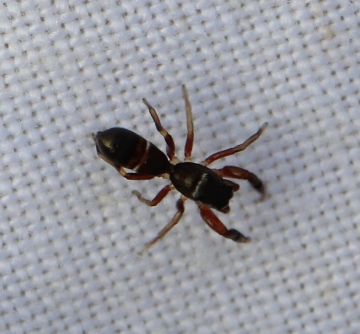Species Account for Synageles venator
Synageles venator (Lucas, 1836)
Araneae: Salticidae

Reproduction for study and non-profit use permitted, all other rights reserved.
Taxonomic group: spiders (Araneae) - County data
View time series maps for Synageles venator
member log-on for taxon report
Status: NS
Essex RDB: Listed
Threat: Essex Endangered
Images
upload a new image
National map for Synageles venator on Spider and Harvestman Recording Scheme website
Essex Red Data List comment
Only known site at Barking PFA lagoons destroyed
Species text
Synageles venator is almost confined to a few locations on the coasts of southern England and South Wales, but also recorded from Yaxley and Woodwalton Fens, Huntingdonshire, two old brick pits in the Peterborough area (one subsequently developed for housing) and a single male from an old pulverised fly ash (PFA) lagoon site in South Essex, now built on (Harvey, et al., 2002). A single female was collected by C.W. Plant from a brownfield site in Dagenham in 2006, a few kilometers to the east of the Jenkins Lane site. The spider occurs in sand dunes on the coast, usually low down among marram, and among similar tussocky vegetation in fens. More recently it has been found in two old brick-pits, in one case on a fairly steep bank with Phragmites and partial vegetation cover near the margin of a pool and in traps set in weathered PFA 'dune' with nearby areas of Phragmites and 'fen' vegetation. The spider is an ant-mimic, usually found in association with ants. It occurred at the Jenkins Lane site on three separate occasions, in each case beaten from low scrub. It is unclear what the spider's habitat requirements are at this site, but it is clearly well established. References
Habitats
Recorded management for locations with Synageles venator
Recorded substrate and hydrology for locations with Synageles venator
Why not join the Club, register and add a new species page
Interpretation of distribution maps



















